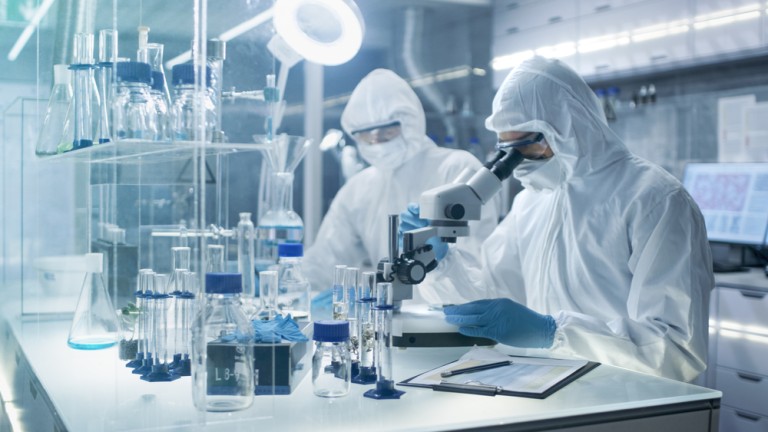
The critical work carried out in laboratory settings, especially labs for industries such as pharmaceutical, biotech, and other health- and medical-related fields, requires stringent safety processes — and the right equipment to conduct those processes. Without safety measures in place, laboratories run several significant risks, including:
- Producing unsafe products for end users
- Endangering lab and facility personnel
- Violating health and safety regulations and statutes
- Losing certifications
- Damaging the reputation of the facility and company
Lab safety equipment and the right processes to go along with the equipment are two of the primary frontline safeguards against these risks.
Types of Safety Equipment in a Lab
Lab safety equipment comes in many different forms, serving several different purposes, all with the goal of reducing risk for end users and facility personnel. Some of the most important safety equipment in a lab includes:
- Protective garments: Protective garments and PPE (personal protective equipment) form an important barrier in protecting lab personnel from potentially harmful exposure and in protecting lab samples and working materials from potential contamination. External contaminants transferred into the lab by personnel are the single most common source of sample compromise and contamination. Protective garments include goggles, coveralls, facemasks, shoe covers, caps and hoods, and more, depending upon the application and materials in use.
- Eye wash stations: Chemical exposure to the eyes — even in vapor form — can pose one of the most significant threats to the health and safety of lab personnel. Eye wash stations are often required in lab and cleanroom settings and should generally be available even if not required. Fast action with eye wash stations can help prevent or attenuate the lasting effects of eye exposure.
- Fume hoods: Fume hoods play a critical role in laboratory safety, keeping potentially harmful chemical vapors and fumes away from personnel through an enclosed ventilation and exhaust system built into a workbench. Fume hoods use a fan to create negative airflow, drawing chemicals, fumes, and contaminants away from the workspace and through a filtration system to either be expelled from the facility via ducts or recirculated once the air has been adequately filtered.
- Safety storage cabinets: Safety storage cabinets are built to prevent potential cross-contamination of work samples and materials and are made of easily sterilizable, nonreactive material such as stainless steel in order to maintain the highest levels of cleanliness. This specialized storage equipment keeps materials isolated and safe.
- Processes: While not a piece of tangible equipment, safety processes are one of the most important assets that you can have in a lab safety plan. Personnel should be properly trained, processes and protocols should be thoroughly documented, and equipment should always be well maintained and in good working order. Processes and training are just as important as safety equipment itself in keeping personnel, products, and end users safe.
Technical Safety Services offers a wide array of lab safety services, including comprehensive fume hood testing and certification services, along with equipment calibration services. To learn more about how we can help you meet your safety goals and compliance requirements, contact us today.

